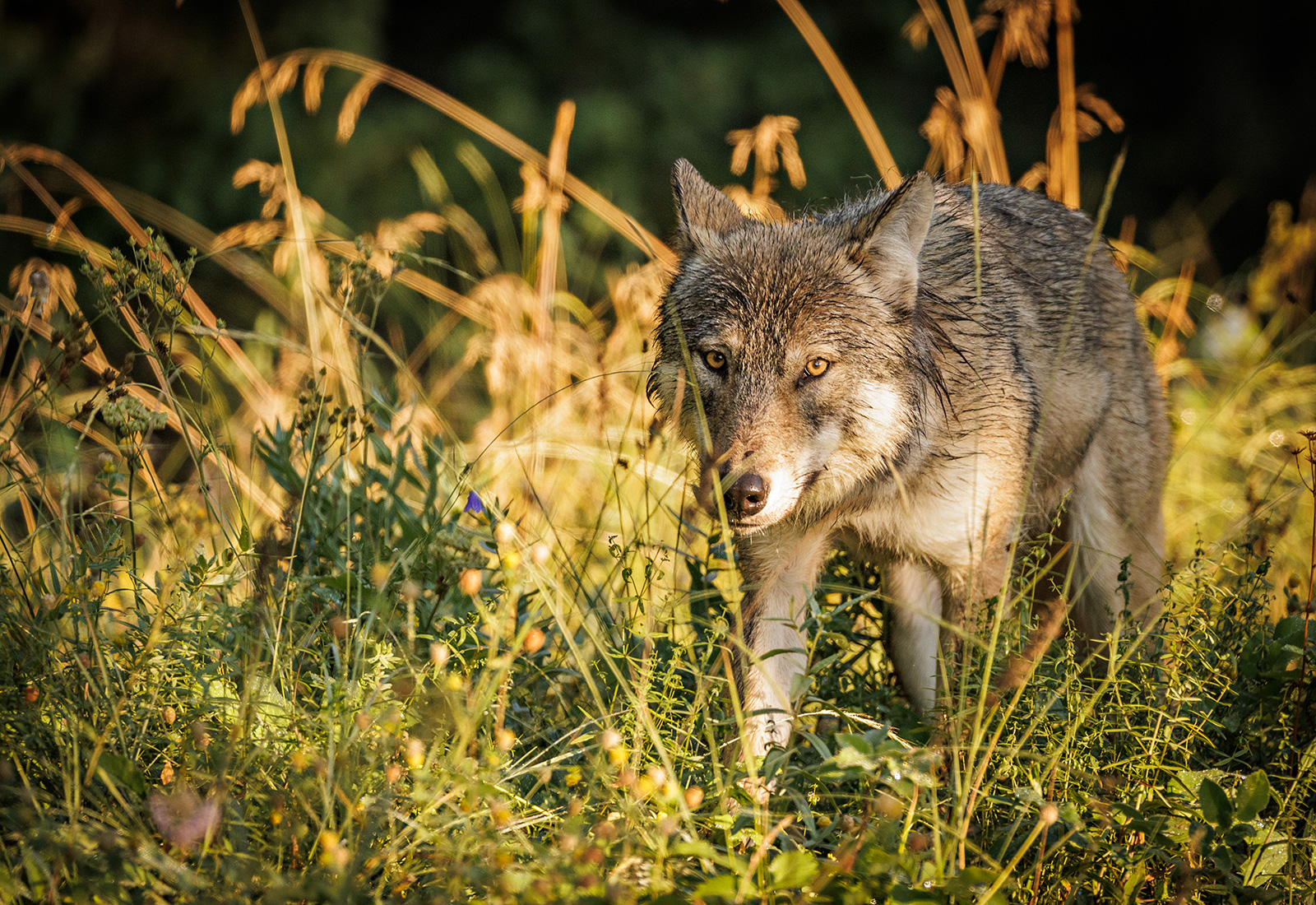Federal Wildlife Managers Deny Petition to Restore Gray Wolf Protections
Although federal wildlife managers will adopt a first-of-its-kind National Recovery Plan to support the conservation of wolves in the northern Rockies, environmental groups are considering a legal challenge
By Tristan Scott
The U.S. Fish and Wildlife Service (FWS) on Friday denied a listing petition from an alliance of more than 70 conservation groups seeking to restore Endangered Species Act (ESA) protections to gray wolves in the northern Rocky Mountains. Although federal wildlife managers framed the decision as following “a path to support a long-term and durable approach to the conservation of gray wolves,” and pledged to adopt a first-of-its-kind National Recovery Plan, the conservation groups said they were considering a legal challenge.
Gray wolves are still listed under the ESA as endangered in 44 states, and are considered threatened in Minnesota; however, in Montana, Idaho, Wyoming, and portions of eastern Oregon and Washington, the wolves are managed under state jurisdiction, with their respective legislatures passing laws allowing wolf harvests, while setting quotas and regulations to manage the populations.
Although the FWS decision doesn’t change existing policy, it signals the latest turn in a decades-old debate over state and federal management of wolves in the West, as well as how to quantify the species’ recovery following their delisting in places like Montana, Idaho and Wyoming.
“After an extensive peer-reviewed assessment using the best available science, the Service today announced a not warranted finding for two petitions to list gray wolves under the ESA in the Northern Rocky Mountains and the western United States,” according to a prepared statement from FWS. “This finding is not action-forcing; the legal status of gray wolves does not change as a result of this finding.”
The latest data compiled at the end of 2022 revealed there are approximately 2,797 wolves distributed across at least 286 packs in seven states in the western U.S., according to FWS, with just under 1,100 wolves in Montana, or about 181 packs. Total wolf numbers peaked in Montana with 188 packs and 1,259 wolves in 2011, which is the same year that Congress stripped ESA protections from the species, allowing Montana to begin harvest management. Between 2011 and 2022, the statewide abundance of wolves declined by 14%, which state and federal wildlife managers have characterized as a sustainable level.
“The Service conducted a comprehensive analysis using robust modeling that incorporated the best available data from federal, state and Tribal sources, academic institutions and the public,” according to Friday’s FWS announcement. “The model assessed various threats, including human-caused mortality, existing regulatory mechanisms, and disease. The analysis indicates that wolves are not at risk of extinction in the Western United States now or in the foreseeable future.”

Kristine Akland, northern Rockies program director at the Center for Biological Diversity, one of the groups that submitted the listing petition, said in a prepared statement that the center is considering a legal challenge in response to the FWS decision.
“I’m incredibly disappointed that the Fish and Wildlife Service is turning a blind eye to the cruel, aggressive wolf-killing laws in Montana and Idaho,” Akland said. “By denying protections to these beautiful creatures the Service is letting northern Rockies states continue erasing decades of recovery efforts.”
Within hours of the decision, at least 10 other groups also issued statements, writing in a joint press release that they “are looking carefully at today’s notice and evaluating legal options.”
The Trump administration removed Endangered Species Act protections for wolves across the lower 48 states just before Trump left office in 2020. A federal judge in 2022 restored those protections across 45 states, but left wolf management to state officials in others, including Montana.
The coalition of wildlife conservation groups submitted the 52-page emergency petition on May 26, 2021, shortly after state legislatures in Montana and Idaho passed new, more aggressive laws aimed at reducing wolf populations, with the intent of curbing livestock conflicts and deer and elk predation.
The petition was submitted to Interior Secretary Deb Haaland and FWS Director Martha Williams, both Biden administration appointees. In a February 2022 op-ed, Haaland wrote: “I am committed to ensuring that wolves have the conservation they need to survive and thrive in the wild based on science and law … It is critical that we all recognize that our nation’s wolf populations are integral to the health of fragile ecosystems and hold significant cultural importance in our shared heritage.”
In Montana in 2021, the state’s Fish and Wildlife Commission voted 3-2 to increase wolf harvests by allowing neck snaring and trap baiting statewide, as well as night hunting on private land and other changes to the season. The vote followed direction from the 2021 Legislature requiring state agencies to decrease wolf numbers and legalize new hunting measures to do so. Testimony on behalf of the suite of bills targeting wolves cited depressed elk numbers and diminishing rates of hunter success in wolf-heavy areas of the state, including northwest Montana.
Although wildlife biologists have acknowledged that wolves have an impact on deer and elk populations, especially in predator-rich environments like northwest Montana, where wolf population densities are estimated to be highest, they note that there are other factors at play on the landscape. For example, while approximately 480 wolves roam the land managed by Montana Fish, Wildlife and Parks (FWP) in Region 1, an area spanning northwest Montana that includes the Flathead Valley, about 1,300 mountain lions are hunting the same landscape.

Montana’s new laws also extended the wolf-trapping season by four weeks and established a bounty program to reimburse hunters and trappers for costs associated with killing wolves.
According to FWP’s Montana Wolf Harvest dashboard, Montana hunters and trappers killed 258 wolves during the 2022 harvest season and have already killed nearly 230 wolves in the 2023 harvest season, which runs until March 15. That includes 96 wolves in FWP’s Region 1, where the quota is 131; 67 wolves in Region 2, where the quota is 104; 42 wolves in Region 3, where the quota is 52; and 14 wolves in Region 4, where the quota is 15. Harvest quotas have already been met in Regions 5, 6 and 7, prompting the season’s closure. The hunting season for wolves was also closed in Wildlife Management Unit 313, where the quota of six wolves was met.
“Unlike the Service, we won’t stand idly by and watch as northern Rockies wolves are slaughtered year after year,” according to Akland. “Wolves are an invaluable part of their ecosystems and deserve strong federal protections.”
More information is available on the Service’s website including the 12-month finding, Species Status Assessment, Species Assessment Form, and Frequently Asked Questions. The finding will be available in the coming days in the Federal Register at https://www.regulations.gov at Docket No. FWS-HQ-ES-2021-0106.
For additional updates, visit the gray wolf web page online.